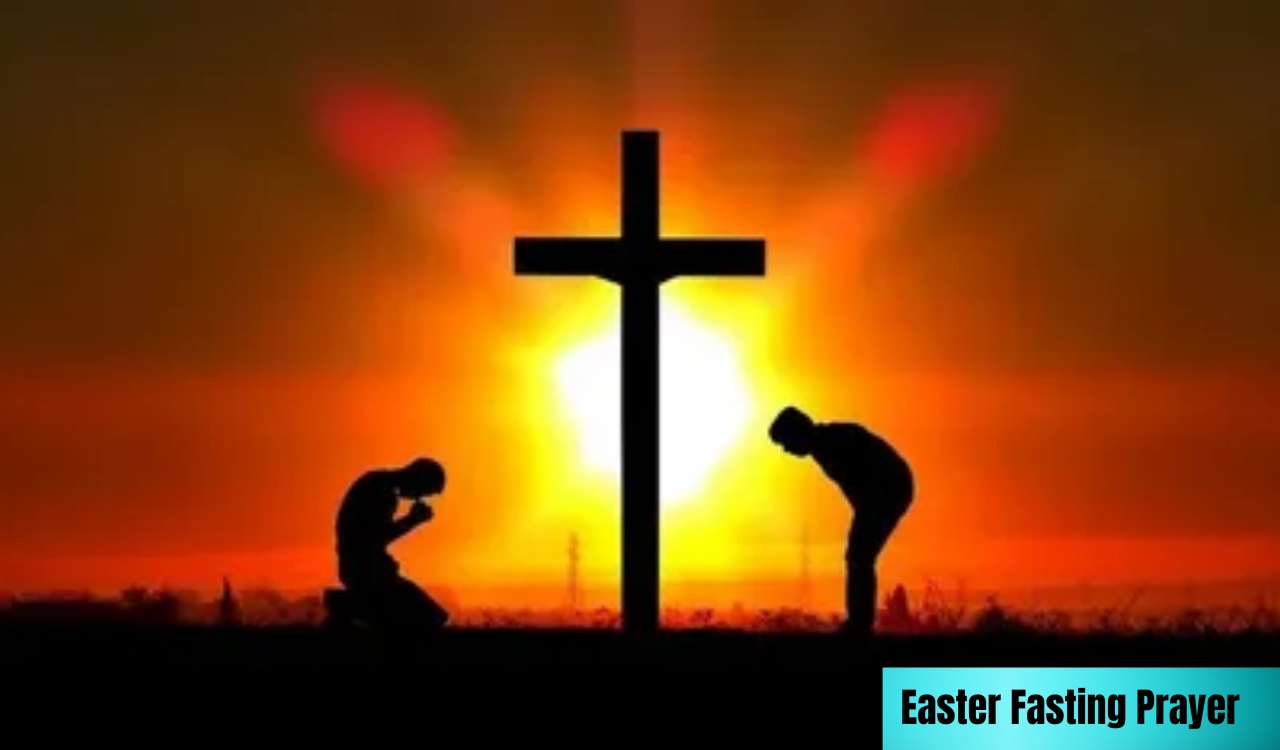Fasting has always played a pivotal role in drawing people closer to God, sharpening spiritual discernment, and opening doors of divine intervention. Among the many fasts mentioned in the Bible, one stands out for its urgency, courage, and national significance: the Esther Fast. This ancient practice, rooted in the Book of Esther, wasn’t just a personal act of devotion—it was a united cry for deliverance during a time of crisis.
When Queen Esther faced the annihilation of her people, she didn’t rush into action. Instead, she called for a three-day total fast—no food, no water—for herself and all the Jews in Susa. This was more than a religious ritual. It was a desperate but faith-filled appeal to the One who changes kings’ hearts and reverses evil decrees.
Today, believers across the world are rediscovering the power of the Esther Fasting Prayer, not just as a historical reference, but as a relevant spiritual weapon in times of personal and communal crisis.
Why Esther Fasted: Context and Crisis

To understand the heart behind the Esther Fasting Prayer, we must revisit the story that birthed it. Esther, a Jewish girl turned queen, found herself in the palace at a time when her people were facing genocide. Haman, a high-ranking Persian official, manipulated the king into signing a deadly edict against the Jews.
Esther could have remained silent, safe in the comfort of the palace walls. But her uncle Mordecai reminded her that perhaps she had come into royal position “for such a time as this” (Esther 4:14). Faced with a life-or-death decision, Esther did what many modern-day believers might overlook—she asked for prayer and fasting first.
This moment revealed her spiritual maturity. Esther didn’t lean on her royal status, charm, or human wisdom. She leaned on God. And this dependency birthed a miraculous reversal of destiny for an entire nation. The Esther Fasting Prayer became a sacred model of urgent intercession that led to divine favor, supernatural courage, and national deliverance.
How the Esther Fast Differs from Other Biblical Fasts
The Bible is rich with examples of fasting—Moses on Mount Sinai, Daniel in Babylon, and Jesus in the wilderness. Yet the Esther Fast holds unique distinctions:
- Total Fast: Unlike Daniel’s partial fast or other food-restricted fasts, Esther’s fast involved no food and no water for three days (Esther 4:16). It was an extreme measure during an extreme crisis.
- Corporate Unity: Esther didn’t fast alone. She called her people to fast with her. This united act of faith amplified the spiritual atmosphere.
- Female Leadership in Spiritual Warfare: Esther’s initiative shows that intercession isn’t limited by gender, status, or background. Her leadership was marked by humility, dependence on God, and bold obedience.
These distinctions make the Esther Fasting Prayer more than a spiritual discipline—it is a clarion call for warriors, intercessors, and believers who want to stand in the gap for their families, cities, and nations.
Spiritual Significance for Modern Believers
Today’s world is filled with silent battles—health crises, broken families, societal injustice, and generational bondage. While the nature of the threat may differ, the spiritual remedy remains the same: prayer and fasting.
The Esther Fasting Prayer is especially relevant in moments when we need divine intervention beyond human effort. Whether you’re facing a legal situation, a family emergency, or spiritual opposition, the Esther Fast invites you to press in, seek God wholeheartedly, and trust Him for supernatural outcomes.
It’s not about ritual—it’s about alignment. Fasting clears the noise, tunes your spirit to heaven’s frequency, and invites the favor of God to rest on your decisions. In a world that promotes self-reliance, the Esther Fast humbles the heart and calls on the name above all names.
Why Esther and the Jews Fasted — Power and Lessons from a National Cry
A Crisis That Required More Than Strategy
The backdrop of the Esther Fast is a high-stakes political and spiritual crisis. Haman’s plot to annihilate the Jewish people had already been sealed with the king’s signet ring. In earthly terms, it was irreversible. Esther, though queen, could not stop the edict on her own. Her influence didn’t guarantee safety—her silence wouldn’t ensure survival.
In this moment of darkness, the response wasn’t immediate action—it was consecration. The people turned to God through the Esther Fasting Prayer, a collective act of surrender and desperation. Their survival didn’t depend on military force or political influence, but on divine intervention.
Esther’s request for a fast wasn’t an afterthought—it was her first response. That alone carries a profound message for modern believers: when facing impossible odds, heaven should be our first consultation, not our last resort.
A Model of Courage and Intercession
Esther’s boldness didn’t begin when she approached the king; it began in the prayer room. Before she stepped into the palace court uninvited—a crime punishable by death—she stepped into spiritual alignment through fasting and prayer.
The Esther Fasting Prayer positioned her heart for obedience and postured her spirit for victory. She didn’t pray to escape responsibility; she prayed for the strength to fulfill it.
This moment highlights the transformational power of intercessory prayer. Esther wasn’t only praying for herself—she was standing in the gap for an entire nation. Her example teaches us that some victories require us to put our comfort aside and fight for others in the place of prayer.
Spiritual Power That Changes Outcomes
When Esther finished fasting and appeared before the king, something supernatural happened: she found favor. The golden scepter was extended. Her request was heard. Her people were saved.
This chain of events didn’t begin with her charm or wisdom—it began with a fast. The Esther Fasting Prayer shifted atmospheres, opened hearts, and rerouted history.
Too often, we underestimate the unseen battles. We wrestle with things in the natural that can only be defeated in the spiritual. Esther’s story shows us that breakthrough doesn’t come by force—it comes by faith. And sometimes that faith is expressed best when we push away the plate and fall to our knees.
Applying the Esther Fast Today – Practical Steps and Personal Breakthroughs
Why the Esther Fast Still Matters
Even though the story of Esther happened thousands of years ago, the spiritual principle behind her fast still applies today. We live in a world where people face personal crises, family challenges, and spiritual battles that can’t be solved by human effort alone. Fasting remains a powerful tool when seeking God’s help and direction.
The Esther Fasting Prayer is especially useful in times when urgent intervention is needed. Believers may choose this fast when dealing with situations like legal threats, broken relationships, health issues, or spiritual oppression. The fast is not a magic formula—it is a way to draw near to God with full focus and surrender.
When done with the right heart, this type of fast can lead to clarity, breakthroughs, and supernatural results.
How to Prepare for the Esther Fast
The Esther Fast is often a total fast—no food or water—for three days. That makes preparation important, both physically and spiritually. People with medical conditions should always consult a doctor before attempting this kind of fast.
Here are the steps to prepare:
- Pray ahead of time. Ask God to reveal what He wants to show you during the fast.
- Make a list of specific things to pray about. Keep your focus clear.
- Disconnect from distractions. Limit media and social activity if possible.
- Drink more water before the fast starts. This helps with physical readiness.
The Esther Fasting Prayer is not just about skipping meals. It’s about making room for God to speak, act, and move in a situation that may feel hopeless without His help.
What to Expect During the Fast
The Esther Fast can be intense. People may experience tiredness, hunger, or moments of doubt. But those who stay focused often report a deep sense of peace and spiritual clarity.
Some also face spiritual resistance. That’s not unusual. Fasting weakens the flesh but strengthens the spirit. Stay committed, read the Bible, and pray often. Journal your thoughts if you can.
It’s important to break the fast slowly, especially after going without food and water. Start with liquids and light foods. Give your body time to adjust.
The purpose of the Esther Fasting Prayer is to seek God’s will, not to perform a task for reward. The results often come after the fast, not always during it. Trust that the time spent in fasting and prayer is never wasted.
Powerful Esther Fast Prayer Points and Final Thoughts
Prayer for Open Doors and Divine Appointments (Esther 8:8)
One of the clear results of Esther’s obedience was favor with the king. After the fast, she received an open door to speak, and the king listened. This wasn’t just political success—it was divine timing.
Use this prayer during your fast:
“Lord, I ask for open doors in areas where things have been closed. Give me favor with those in authority. Help me speak with wisdom, and may the right opportunities come at the right time. Just like Esther, let my request be met with Your favor.”
When used during the Esther Fasting Prayer, this request sets the tone for spiritual and practical breakthroughs.
Prayer for Reversal of Evil Decrees (Esther 9:1)
Haman’s plot was not only exposed, it was reversed. The very day the Jews were supposed to be destroyed became the day of their victory. Evil plans do not have the final word when God is involved.
Pray like this:
“God, I cancel every plan meant for harm. Reverse every word spoken against my family, my future, or my calling. Like in the days of Esther, turn mourning into celebration. Make what was sent to destroy me become a reason for Your name to be praised.”
This prayer is at the heart of the Esther Fasting Prayer, especially when facing battles that feel unjust or overwhelming.
Prayer for the Salvation of Loved Ones and Nations (Esther 8:17)
The fast did more than save lives—it turned hearts. Many people joined the Jews because of what they saw God do. Fasting isn’t only for personal change; it has the power to shift families, communities, and even nations.
Here’s how to pray:
“Lord, reach the hearts of those who are far from You. Save my family, restore broken lives, and bring revival to my city and nation. Let Your mercy be known just as it was in Esther’s day.”
Include this during your Esther Fasting Prayer to align your heart with God’s larger purpose.
Other Helpful Prayer Points to Include
- Prayer for wisdom and discernment (James 1:5)
- Prayer for strength to obey, even when afraid (Joshua 1:9)
- Prayer to expose hidden agendas or attacks (Psalm 64:2)
- Prayer for unity among believers during crisis (John 17:21)
You can write your own based on the specific situation you’re fasting for. Always include Scripture where possible. Keep it simple, honest, and focused.
Final Thoughts: Walking in the Spirit After the Esther Fast
The Esther Fast is intense, but it’s not the end of the journey—it’s the beginning of alignment. After the fast, keep praying. Keep seeking God. Often, the clarity or breakthrough you fasted for will come in the days or weeks that follow.
The lessons from Esther remind us that God uses ordinary people to do extraordinary things. She didn’t start as a hero—she became one by choosing obedience in a hard moment. The same is true for anyone who steps into a time of fasting with faith.
The Esther Fasting Prayer isn’t just for a story in the Bible. It’s for people today who need God to move, speak, or save. If you approach it with humility, preparation, and purpose, it can bring transformation to your life and the lives of those around you.
Must Read “125 Monday Prayers“

